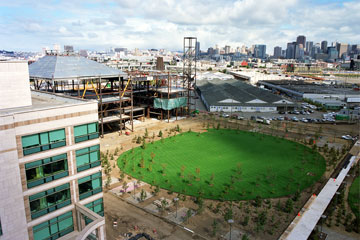Behind a progressive city is often a progressive university

Universities grow the economy, but they also advance change for a higher quality of life and health.
It’s well documented that universities are talent and economic engines for cities – the economic impact of ‘higher education’ is $1.2 trillion per year, 10% of the U.S. economy. 20 million Americans either work for or attend an institution of higher education – 1 out of every 15 people. In Canada, 35% of its total R&D ($9 billion) was done by universities.
However, universities and colleges are prime communities to set examples for how its naturally forward-thinking students want to live, and more of them are accommodating that vision. For example, universities are expanding within cities rather than building new in the outskirts (see image description below.) Fifty American universities issue transit passes to more than 825,000 students and staff. Now, according to the Washington Post, “across the country, college administrators are vying to outdo each other in environmental consciousness, sharing their strategies and boasting about their accomplishments. They are hiring “sustainability coordinators,” negotiating new purchasing contracts and building more energy-efficient laboratories and dormitory rooms.”
Check out yesterday’s entry listing the top cities for high-tech and car-free livability, and you’ll typically find a university with a reputation for innovation. Read more about their impact in our University Town category. Discuss how universities are making an impact here.
Image: The University of California, San Francisco in Mission Bay, overlooking the ‘old economy’ manufacturing warehouses that will become part of its new economy campus and surrounding walkable urban village.

Leave a Reply